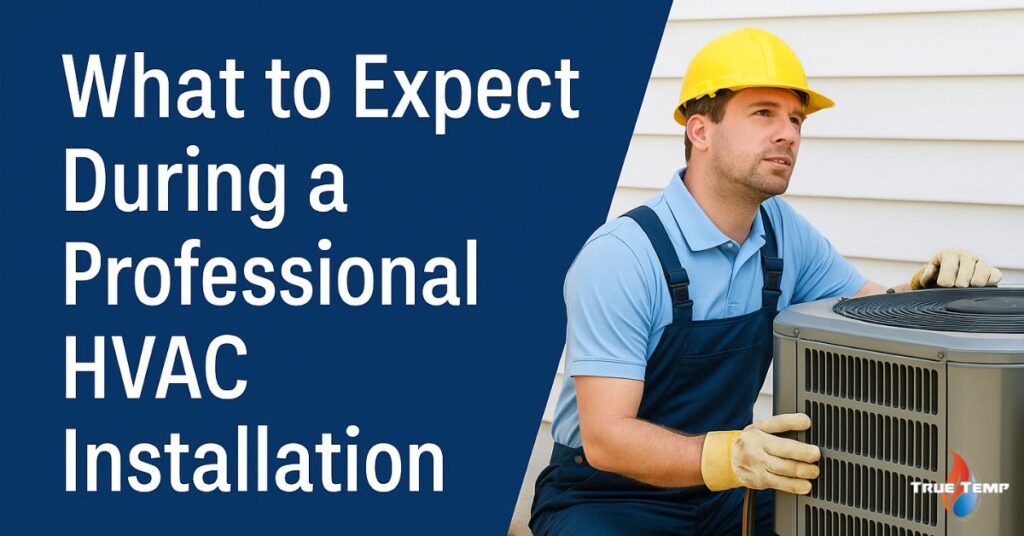Regardless of whether you are contemplating replacing an old unit or installation HVAC in a new home, the HVAC installation process is a major investment towards your home’s comfort, efficiency, and air quality. Understanding what to expect in advance can ease your anxiety, reduce potential stressors, and streamline the entire process. This guide prepares you for every stage of installation, from pre-installation to post-installation, so you know what to expect and feel confident throughout.
Why Professional HVAC Installation Matters
Hiring someone for HVAC installation service should not be a DIY job. There are HVAC contractors who are licensed and will ensure that building codes, manufacturer instructions, and safety checklists are followed so that when your system is installed, your HVAC system will be functioning properly at peak performance. If your HVAC installation is not done right, the system may operate poorly, straining the furnace and leading to higher energy costs and potential early breakdown.
If you’re a business owner or property manager, don’t miss our commercial HVAC system solutions tailored to larger buildings and commercial applications.
Pre-Installation Evaluation and Load Calculation
As a part of the installation of HVAC, a qualified technician will visit your home for a preliminary visit to evaluate your space, consider your needs, and review your system. Manual J Load calculations, checking ductwork, insulation, and evaluating
This assessment is crucial for HVAC installation in residential buildings, as proper sizing has an impact on energy use, comfort, and equipment life.
Step-by-Step Breakdown of the Installation HVAC Process
The HVAC installation process is not simply about placing a unit outside and turning it on; there are many steps to be completed. This is what a standard day consists of:
Step 1 – Removing the Old System (if relevant)
Where a unit is being replaced, the team will disconnect and remove the unit while recovering the refrigerant in an environmentally responsible way and abiding by EPA regulations regarding refrigerant recovery and disposal.
Step 2 – Installing indoor and outdoor units
Our indoor air handler and outdoor condenser are mounted securely in place in such a way that there is airflow and water drainage around the devices.
Step 3 -Connecting Ductwork and Refrigerant Lines
The contractor seals and insulates ducts, if applicable, and connects the refrigerant lines between the units for optimal heat exchange.
Step 4 – Wiring and Thermostat Setup
Qualified electricians make the electric connections and either set the thermostat to the preferred setting or replace it with a smart thermostat.
Step 5 – Calibration and System Testing
After the setup is complete, we check the system for proper pressure, airflow, and thermostat response. Calibration will ensure the system operates properly. Appreciate the importance of getting and knowing how to install HVAC system right the first time by understanding the prerequisites and the system’s depth.
HVAC Installation Checklist for Homeowners
We designed this checklist with the convenience of both homeowners and their contractors in mind.
Remove Clutter from Work Spaces: Make certain there is clear access around the furnace, condenser, and the electrical panels.
HVAC installation checklist:
- Safety Discussion: Discuss with the contractors the safety protocols they will be setting up around pets and children and the general time estimates for the installation.
What to Expect in Terms of Time and Cost
When it comes to HVAC installation, expect anywhere from 1 to 21 days. This depends on the complexity of the system, the layout of the house, the weather, and other miscellaneous factors. Typically, expenses settle anywhere from 4,500 to 10,000+, depending on unit size, brand, ductwork, and extras like air purifiers or zoning.
If you have any requests that involve AC installation and repair, be sure to check if a deal can be offered with a bundled price or better efficiency.
Post-Installation Inspection and System Testing
Finally, after every component is set up, the technician will run a detailed inspection of the whole system while guiding the user on how to operate the entire system after installation.
They will check airflow and temperature output, check proper refrigerant levels, and show you how to access and change filters. This is the final verification check to confirm that all the requirements of the safety and performance standards are met for the HVAC installation service.
Tips for Maintaining Your New HVAC System
Monitoring your system after installation is crucial because it guarantees the lifespan of the HVAC system. To maximize the investment, be sure to replace filters every 1 to 3 months, schedule seasonal tune-ups, make sure vents are not blocked, and monitor energy usage for sudden spikes. Following the technician’s post-install advice and the AC installation procedure checklist will also help. Don’t forget to check out our seasonal HVAC maintenance plans to keep your system efficient year-round.
Mistakes to Avoid During HVAC Installation
With a little assistance, homeowners could unintentionally cause delays or obstacles for the installers.
#1: Picking the Incorrect Contractor
Don’t forget to verify reviews, insurance, and licenses.
#2: Dismissive Ductwork Issues
Inefficient, old, leaky ducts tend to have the capability of reducing system efficiency by more than 30%.
#3: Underestimating the Importance of Quality Over Cost.
It is vital to remember that cheaper options don’t always guarantee system longevity.
Whether you’re looking for commercial installation of HVAC or need some help with HVAC installation residential, avoiding these traps improves sustained performance.
Final Thoughts
Upper, lower, mids, and bass in a hotinetech frame mark the borders of a slide mountain and offer the best energy-and-efficiency intersection, which means a properly done installation HVAC goes beyond comfort, protecting your energy bill and equipment, as well as ensuring a cleaner air quality for your household.
Choosing a seasoned company to handle your HVAC installation service brings you comfort because you know the job will be done safely, efficiently, and in accordance with local regulations.
Do you need help with HVAC installation in Texas?
True Temp HVAC is your reliable contractor for AC installation and repair, entire system changeouts, and professional system design.
Contact Us today to schedule your next HVAC installation or get a free in-home evaluation!

